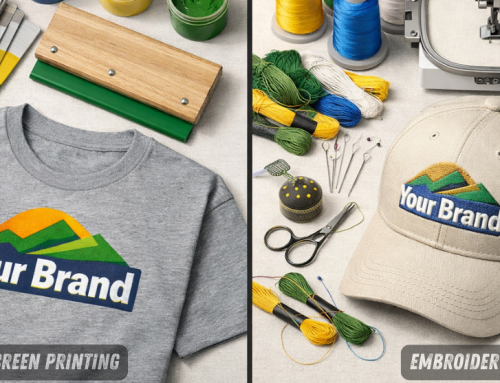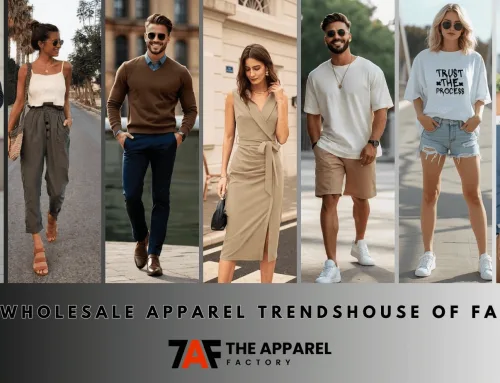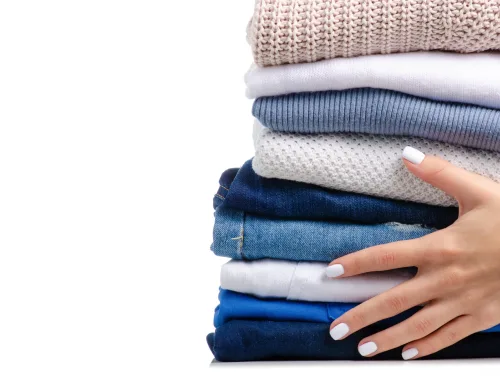
With custom tees taking over the world like a storm it is essential to know about the different methods used to make a customized shirt, sweatshirts and hoodies or any other apparel. In this regard, one method is commonly used and is also ideal for many different materials and it is screen printing. In this blog we will cover everything from its basic definition all the way to how you can do screen printing for your own business.
Brief History of Screen Printing
The origins of screen-printing trace back to ancient China. It was used during the Song Dynasty (960–1279 AD). The technique then spread to Japan. Japanese artisans refined the process with woven mesh. It became known as “silkscreen printing.” The process arrived in Europe in the 18th century. Samuel Simon patented the modern screen-printing process in 1907. This invention used a rubber blade to push the ink. In the mid-20th century, artists embraced the medium. Andy Warhol popularized it with his iconic pop art prints.
What is Screen Printing?
Screen printing is a technique that uses a stencil. A mesh screen transfers ink onto a surface. Areas of the screen are blocked with a stencil. This makes them impermeable to the ink. The ink passes through the open areas of the mesh. It forms the desired image or design. A squeegee is used to push the ink through the screen.
Types of Screen Printing
There are several types of screen printing used for different purposes. These are the most common types of screen printing methods:
- Spot Color Printing
- Halftone Printing
- CMYK Printing
-
Spot Color Printing
Spot color printing uses a specific ink for each color. This is the most common type.
-
Halftone Printing
Halftone printing uses tiny dots to create shading. It can reproduce photographic images.
-
CMYK Printing
CMYK printing uses four colors: cyan, magenta, yellow, and black. It is for full-color designs. Simulated process printing combines spot colors. This allows for complex, multi-colored images.
Pros and Cons of Screen Printing
Just like any method, there are pros and cons that come with each method. Here are the advantages and disadvantages of screen printing.
Pros of Screen Printing
- Durable
- Vibrant and opaque colors
- Cost-effective for bulk orders
- Can be used on different materials
Cons of Screen Printing
- High setup time and cost
- Limited detail reproduction
- Environmental concerns
- Design limitations
What Can It Be Used On?
Screen printing is incredibly versatile. It works on many different materials. Here is a list of apparel and accessories it can be used on.
Apparel

There are plenty of apparel items that are ideal for screen printing however, t-shirts take the lead. They are the most common apparel used for screen printing. Apart from that, screen printing can also be used on sweatshirts and hoodies. Sports teams can also take great benefit from it as it is perfect for sports uniforms. Be it basketball uniforms, football uniforms, soccer uniforms, or volleyball uniforms. Winter apparel is great for it too, including outerwear.
Accessories

Screen printing can be used on many different accessories as well including bags, towels, headwear, aprons, and blankets.
Bulk Custom Screen Printing
When you need to create large quantities of custom screen printed items, bulk orders are often the best option. Here is a breakdown of the benefits, production process, and turnaround time for bulk screen printing orders.
- Cost Efficiency: The more items you order, the lower the cost per piece. The initial setup for screen printing, which involves preparing the screens and setting up the press, is time-consuming. Once this is done, producing large quantities becomes far more affordable.
- Consistency: Bulk orders ensure that every item has the exact same design, quality, and appearance. This makes them ideal for uniforms, promotional giveaways, and consistent corporate branding.
- Streamlined Process: When you place a bulk order, the screen printing company will often streamline the production process. This saves you significant time and effort. You can focus on other aspects of your business or event while the printing is being handled.
Benefits of Bulk Orders
Bulk orders offer excellent value, here are some of the best benefits of bulk screen printing orders.
- Low Cost: It offers lower cost per item as fixed fees are spread across more units.
- Better Pricing: Screen charges become negligible with higher quantities.
- Maintained Quality: Consistent quality is maintained across all items.
How to Do Screen Printing

The process of how to screen print involves multiple steps. First, you have to create a design or . You then prepare the mesh screen with an emulsion. The design is exposed onto the screen using UV light. This hardens the emulsion. The unexposed parts are washed out. This creates the stencil. The screen is then placed on a screen printing press. The garment is laid flat beneath it. A special screen printing ink is applied. A squeegee is pulled across the screen. It pushes the ink through the stencil. Finally, the ink is cured with heat.
The Tools Needed for Screen Printing
If you’re wondering how to screen print at home, you need a few things.
- Screen printing kit which usually includes a press, screens, squeegees, and ink.
- Light source for exposure.
- Washout booths are needed for cleaning.
- Heat press or conveyor dryer is used for curing
The most important items are the screen printing supplies. These include screens, inks, and emulsion.
Why Choose Screen Printing Over Other Methods
Screen printing has several distinct advantages. Compared to DTG printing, it offers more vibrant colors. The print is also far more durable. Screen prints can withstand many washes without fading. For large orders, it is more cost-effective as opposed to embroidery, heat transfer or other methods. DTG is better for small, detailed prints. You can read our blog on embroidery and also learn about heat transfer in detail for in-depth information.
The Cost of Screen Printing: What Affects Pricing?
There could be multiple reasons that could affect the pricing screen printing and here is a list of all.
- Quantity of Items: Biggest factor in pricing: The more items you order, the cheaper each one becomes.
- Number of Colors in the Design: Each color adds cost: Screen printing requires a separate screen for every color in the design.
- Type of Garment: Different garments have different base costs: Printing on premium items like hoodies, jackets, or specialty fabrics is more expensive than standard cotton t-shirts.
- Design Complexity: Intricate or detailed designs can increase the cost: Fine details may require special attention, advanced techniques, or more setup time.
The Outlook
The screen printing industry is currently thriving. It is a multi-billion dollar global market. This industry remains the top choice for apparel. Screen Printing is widely preferred for its durability and color quality. The method works on many different kinds of fabrics. Recent market data confirms consistent growth and the market has shown a steady upward trend, which is majorly due to the demand for t-shirt printing.
If you are a small business owner and want to sell custom apparel then you should outsource the customization part if you make your own products as it will be cheaper. However, you can get apparel and customizations too from a single source as well. With companies like The Apparel Factory and more, you can ask for a vast selection of apparel and accessories along with the customizations. For this you just need to provide the designs and they will handle everything along with the shipping.
The strong demand of customized t-shirts and other apparel items ensures a bright future and investing in it can be highly beneficial for businesses. So whether you have a small business or a big company, you can take great advantage of the demand and offer your customers with custom printed apparel and accessories. This blog is an extension of our Guide to Customization Basics for Businesses, you can read this blog if you want to learn the basics and know about other customization methods.
Published on:
September 16, 2025





